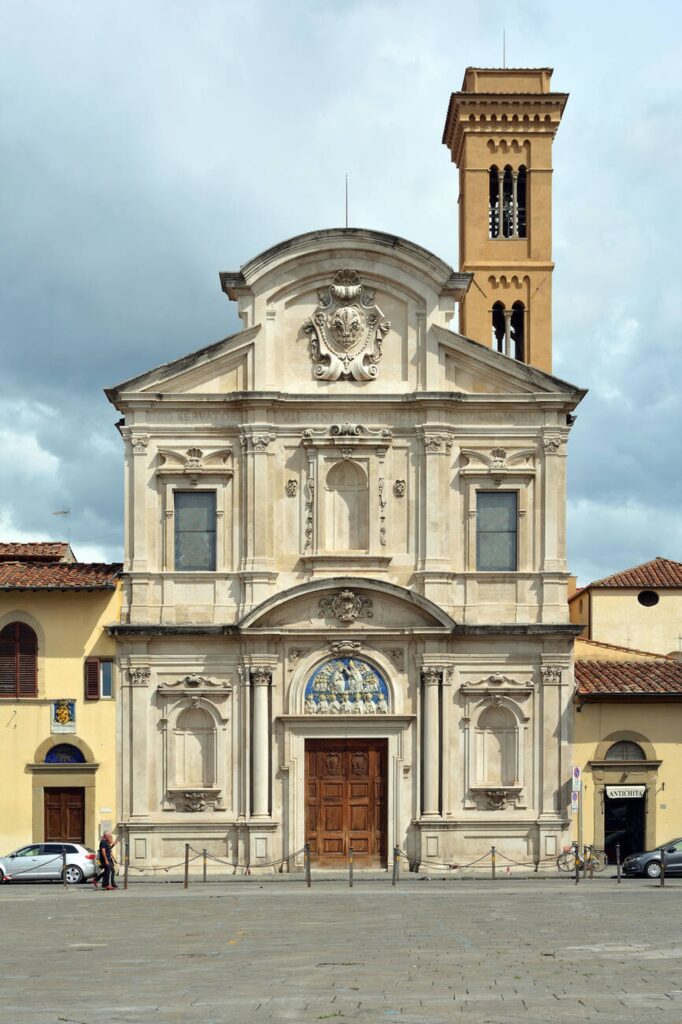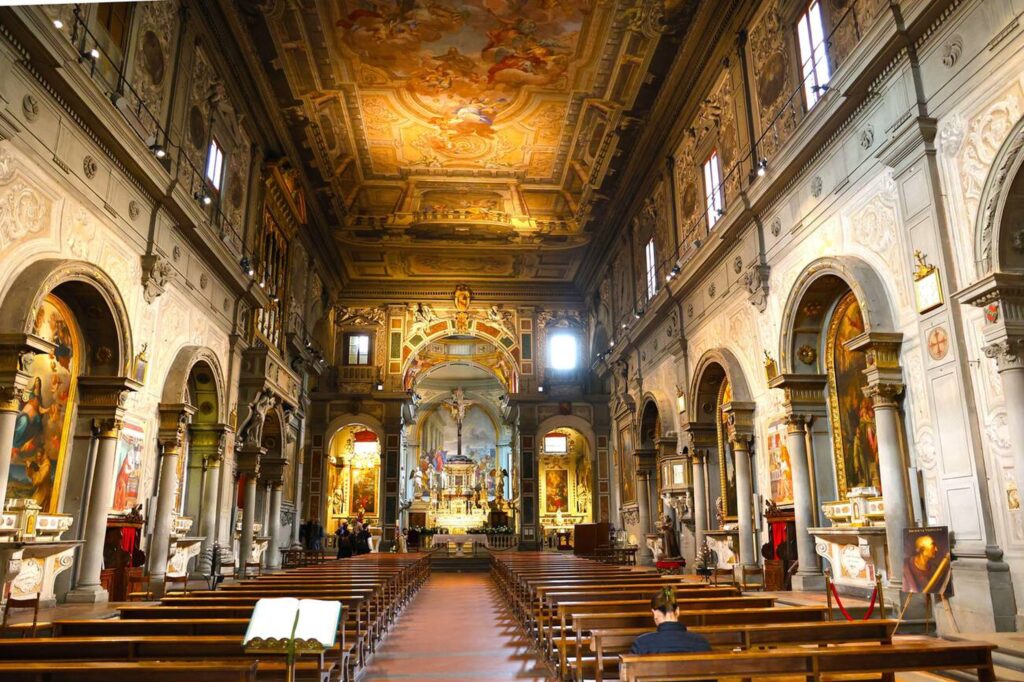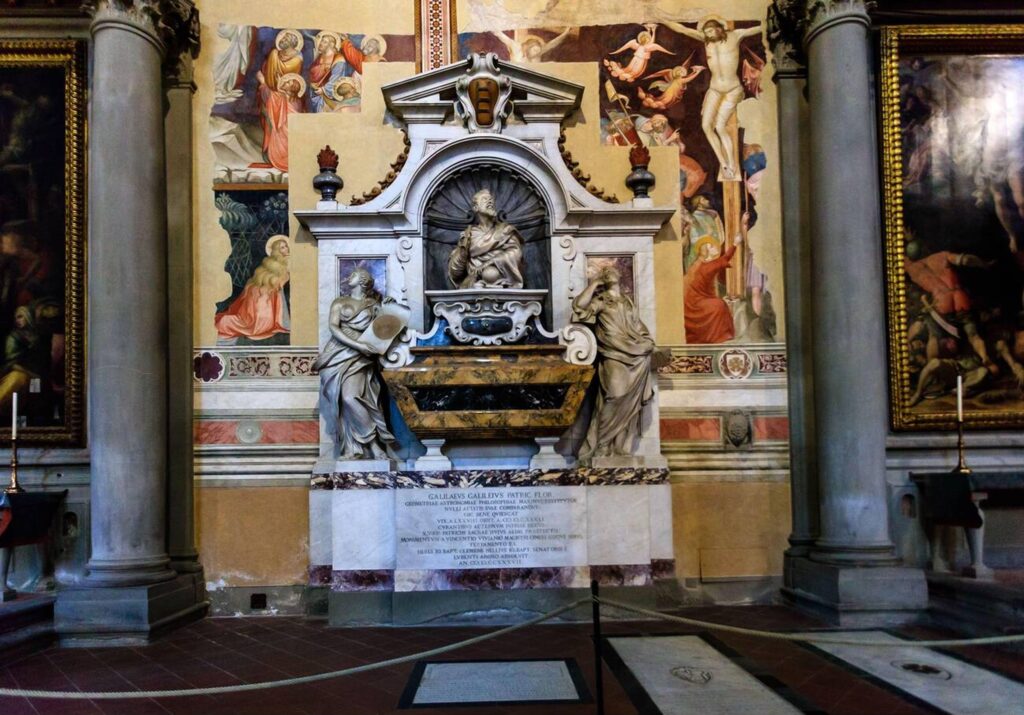Highlights: All Saints Day in Italy, Ognissanti traditions, visiting Santa Croce Florence, Italian holidays in November, tombs in Florence, Italian cultural traditions
A Quiet Pause in the Heart of Fall
It is finally fall in Italy! Temperatures are dropping, the countryside has that soft golden light unique to this time of year, and, as seems to happen every autumn, I’ve caught a little head cold to welcome the change of season. Fortunately, I’m not scheduled to lead any tours today or tomorrow, so I’m tucked inside with tea and honey, resting my rather raspy voice before returning it to full strength.
Perhaps it’s the quiet, or maybe it’s the gray drizzle outside my window, but I’ve found myself thinking about tombs lately. I know that sounds a bit grim, but here in Italy, tombs are part of daily life — woven into art, architecture, and history. Every church tells stories of the living through the monuments of the dead.
From the 14th century through the Napoleonic reforms of the early 19th century, wealthy Florentines — bankers, merchants, and noble families — purchased the rights to elaborate burial chapels. These spaces became not just final resting places, but also vibrant displays of faith, status, and artistic achievement. Frescoes, sculptures, and altarpieces turned these tombs into small masterpieces — eternal tributes to both devotion and earthly success.


Ognissanti: All Saints’ Day in Italian Tradition
Another reason tombs have been on my mind is that November 1st is approaching — Ognissanti, or All Saints’ Day. It’s a national holiday in Italy and one that holds deep cultural and spiritual significance.
Across the country, families bring flowers to the graves of their loved ones. Cemeteries are suddenly filled with color — chrysanthemums in shades of gold, white, and purple adorn tombstones, and candles flicker softly into the evening. Though it’s a solemn occasion, it’s also comforting — a yearly reminder of connection between generations.
For the Catholic Church, All Saints’ Day honors the saints and martyrs who shaped the faith, from well-known figures like St. Francis of Assisi to the many unnamed souls who led lives of quiet holiness. The following day, November 2nd, is All Souls’ Day, when prayers are offered for all the departed.
Meanwhile, in my inbox, my American friends are buzzing with plans for Halloween — pumpkin carving, costume parties, and trick-or-treating (which has only recently become popular here). It’s funny how two cultures express similar instincts so differently: one with sugar and spookiness, the other with flowers and remembrance.


Tombs That Tell Stories: The Legacy of Santa Croce
Whenever I lead tours through Florence, I love watching visitors’ faces as we step into the Basilica of Santa Croce. It’s a breathtaking space, but what often surprises people most is how many of Italy’s great minds rest beneath its marble floors.
Here lie Michelangelo, Galileo, and Machiavelli — giants of art, science, and philosophy. Their tombs are surrounded by elaborate sculptures celebrating their genius, while over 250 marble slabs once covered the floor, marking the graves of others who shaped the city’s history.
By the 19th century, Santa Croce had come to be seen as the Pantheon of Italian Glory. Poet Ugo Foscolo captured this sentiment in his masterpiece Dei Sepolcri (“Of the Sepulchers”), written as Napoleon’s reforms were pushing burials outside city walls into public cemeteries. Foscolo argued that tombs are not merely for the dead but serve as powerful reminders for the living — places that keep alive the memory of “noble souls and bright intellects.”
When Foscolo himself died in London in 1830, his body was brought back to Florence with great ceremony, fulfilling his wish to be buried among Italy’s luminaries in Santa Croce. His words, and his final resting place, remind us that memory and reverence are integral to the Italian soul.

Honoring Memory in Modern Italy
As I sip my tea and listen to the rain, I can’t help but feel grateful for the rhythm of Italian life — how history is never far away, even in the simplest traditions. All Saints’ Day invites us to pause, to remember, and to feel our place in the long continuum of human stories.
Whether you find yourself wandering through Florence’s churches, gazing up at the marble effigies of geniuses past, or simply lighting a candle for someone you’ve loved, you are part of that same story — one of remembrance, reverence, and connection.
When you next visit Italy in the fall, I hope you’ll experience this tender season for yourself. There’s something deeply moving about how beauty, faith, and history come together here — even, and perhaps especially, in the quiet company of the past.

